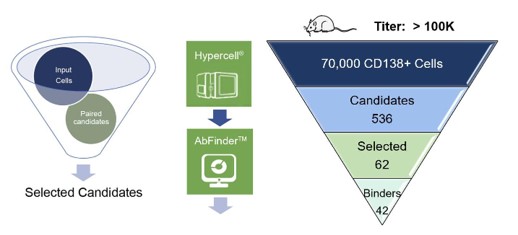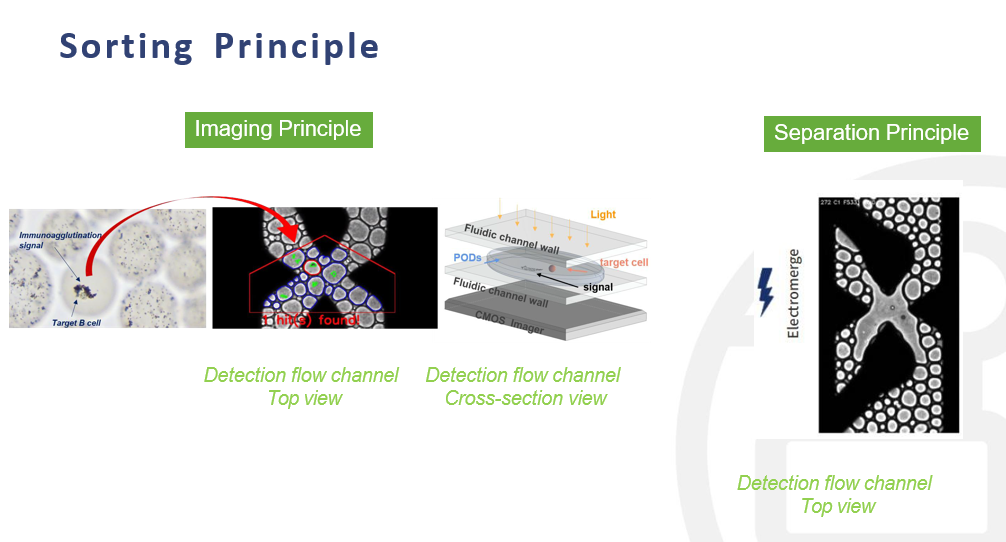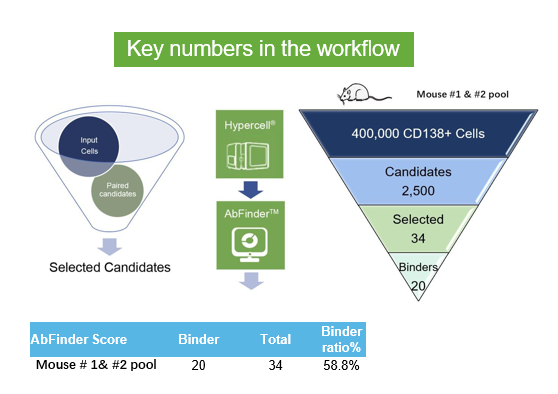America Diagnostics' Hypercell® System is a groundbreaking high-throughput single-cell sorting platform that accelerates antibody discovery and cloning. By combining automation, precision, and speed, the Hypercell® System significantly outperforms traditional methods such as phage display, yeast display, and hybridoma technologies.
Compared to traditional technologies, Hypercell® offers:
| Technology | Throughput | Antibody Diversity | Species Agnostic | Time to Discovery |
|---|---|---|---|---|
| Hypercell® | 100,000 - 1,000,000 cells | High | Yes | 1 Day |
| Phage Display | 10,000 - 100,000 clones | Medium | No | Weeks |
| Yeast Display | 10,000 - 100,000 clones | Medium | No | Weeks |
| Hybridoma | 100s - 1,000s cells | Low | No | Months |
With the HypercellTM System, researchers can achieve higher antibody affinity and diversity in a fraction of the time, making it the ultimate choice for modern antibody discovery.
Discover cutting-edge antibody screening with our AmerIDx® system, featuring the HypercellTM technology. This efficient, step-by-step process is designed to optimize antibody discovery for biomedical research and therapeutic applications. Here's an overview of the workflow:
Unlock the potential of advanced antibody discovery with our streamlined workflow, ensuring precise and reliable results.

Fig 1. HypercellTM workflow for antibody screening, from immunized animal to purified antibody.
Our process includes single-cell sorting, target cell recovery, and sequence analysis with AbFinder™ software,
all designed for unparalleled efficiency.
To identify high-affinity binders from plasma B cells and evaluate their sequence diversity and binding properties using the HypercellTM System and AbFinderTM software.

Fig 2. Key numbers in Case study 1

Fig 3. ELISA results in in Case study 1
In this case, the HypercellTM System enabled rapid identification and characterization of high-affinity antibodies, significantly accelerating the antibody discovery process. The system’s integration with AbFinder™ software provided seamless analysis of sequence diversity and functionality, highlighting its value as a next-generation solution for therapeutic antibody development.

Hypercell® identified high-affinity antibodies in one day, significantly faster than traditional methods. The AbFinder™ software facilitated sequence analysis and lead selection.
To evaluate the effectiveness of the Hypercell® System in discovering high-affinity antibodies against HBsAg (Hepatitis B surface antigen), a key diagnostic and therapeutic target for Hepatitis B Virus (HBV).

Fig 4. ELISA results in in Case study 2

Fig 5. BLI Kinetics data in Case study 2
Case Study 2 demonstrates the HypercellTM System's ability to efficiently identify high-affinity antibodies against HBsAg. The system's integration of single-cell sorting, high-throughput analysis, and AbFinder™ bioinformatics enabled rapid and precise antibody discovery, making it a powerful tool for therapeutic and diagnostic antibody development.

Demonstrated superior performance in stability tests for antibodies generated using the HypercellTM platform compared to conventional approaches.
Choose Hypercell® for unparalleled efficiency and quality in antibody discovery processes.


With exceptional performance, Hypercell® excels in discovering antibodies for various targets, showcasing impressive results with high binder ratios and rapid identification processes.
HyperlinkSample text. Lorem ipsum dolor sit amet, consectetur adipiscing elit nullam nunc justo sagittis suscipit ultrices.
